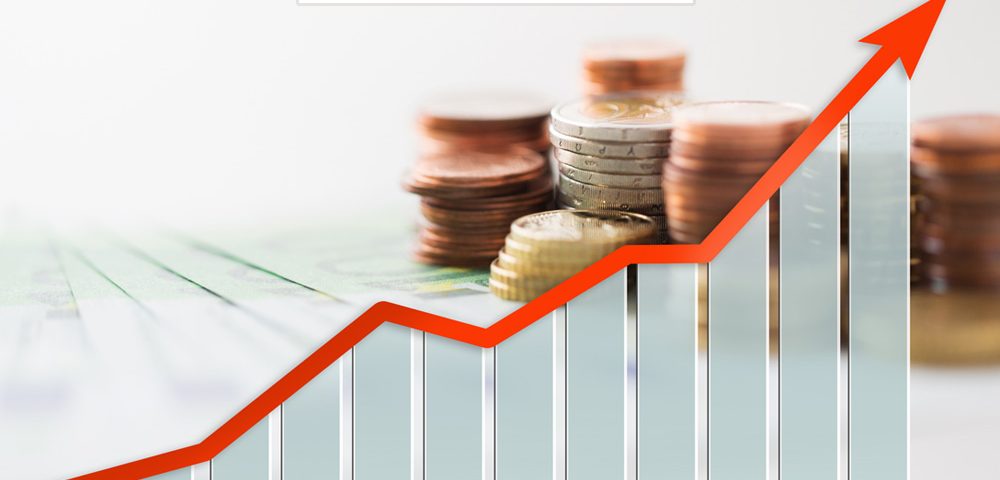Article Update: 5 considerations for choosing an investment beyond just cost

Article Update: These 5 signs could tell whether you have a great business idea
October 27, 2017
Article Update: VC Investor list 9 reasons why most Nigerian Startup can’t get funding
October 27, 2017Some famous sports quotes can help advisors think about the various aspects of selecting an ETF.
Vince Lombardi, the legendary Green Bay Packers head coach, famously declared: “Winning isn’t everything; it’s the only thing.” Although Lombardi was not the first to utter the quote, the statement cemented his public image and became a mantra in sports.
Yet Lombardi later expressed regret for the iconic saying, conceding that it was too broad. “I meant the effort. I meant having a goal,” as he was later quoted. “I sure didn’t mean for people to crush human values and morality.”1
Let me explain.
The Vanguard Effect® has influenced the entire industry. More than 60 percent of industry assets are now in the two least expensive deciles of mutual funds and ETFs (more than half of those assets were in index funds), and less than 1 percent of assets are in the most expensive decile of funds and ETFs. (See figure below.) This is a fantastic outcome for investors.
ETF and mutual fund assets by deciles of expense ratios
What’s also interesting about these Morningstar data (as of May 31, 2017) is that the highest expense ratio product in the lowest decile dropped more than 20 percent in the last 10 years. So costs are falling across the board even as assets are migrating to lower-cost funds.
How much of a difference can low-cost make? It depends
But as expense ratios drop to near zero, there is less relative benefit now to an investor who naively chooses the cheapest option in the category.
Let’s consider a client who invests $1 million in ETFs. If the client’s average cost is as little as 10 basis points, that client would spend $1,000 on fund management. If the expense ratios in the portfolio dropped to nine basis points, on average, that millionaire client would save only $100. While that is a difference, it certainly raises the question of how important that last basis point is when considering an index fund or ETF. With ETF expense ratios converging in many core products, it should be apparent that other factors, such as strategy or portfolio manager execution, have a longer-term impact on an investor’s ability to reach his or her long-term goals.
Of course, cost matters a lot when you’re considering an 80- to 120-basis-point expense ratio investment versus a 12- to 25-basis-point investment. In that case, the expense ratio should be near the top of the due diligence checklist. When the differences in expense ratio among competing products are only a handful of basis points, cost should probably fall further down the due diligence checklist.
Let’s then consider another famous sports quote:
“Talent wins games, but teamwork and intelligence win championships.” –Michael Jordan
As Jordan’s quote alludes to, a team needs more than just talent to succeed. In a similar vein, investors should look beyond the expense ratio to successfully identify a product that best fits their needs.
Five points for due diligence
These five aspects are powerful additional filters to use when choosing an investment.
1) Investment strategy. The notion that index funds, even within the same category, are interchangeable commodities is a falsehood. You must understand the index and the assumptions behind why the index was chosen as a benchmark.
An equal-weight index, for instance, will likely not perform like a market-cap-weighted index; differences should be expected.
2) Methodology. In fixed income, for example, there can be significant differences among products aiming to track the overall U.S. bond market. Some providers, like Vanguard, use float-adjusted benchmarks, which do not count bonds held by the Federal Reserve because those bonds are not part of the public market. Others do not use float- adjusted indexes. In equities, there can be differences in how to view the public float of various companies. These types of distinctions seem small but can yield a different portfolio exposure.
3) Tracking difference. A 1-basis-point expense ratio advantage can be easily overwhelmed by “mistracking” a benchmark. This may occur, for instance, if the fund manager fails to properly match the key characteristics of the fund’s benchmark. You can analyze a fund’s tracking using a variety of tools online, from both ETF providers and third-party analytical tools. To truly evaluate a fund manager’s ability to track, it may be instructive to adjust for expense ratio or other variances outside the manager’s control, such as fair-value pricing on international ETFs.
4) Spreads. Bid-ask spreads are a cost when buying ETFs, and these costs can sometimes be materially larger than an ETF’s expense ratio. So before buying an ETF, one bit of research you should do is to perform a total cost of ownership comparison that includes the expense ratio and the spread for the ETFs you are comparing, assuming one- and three-year time horizons — or longer — to understand the holdings’ actual costs.
5) Tax efficiency. Taxes can take a much bigger bite out of your clients’ returns than fund expense ratios. You should consider the frequency and magnitude of the capital gains distributed by an ETF. Some capital gains issued by equity ETFs can be large. Remember that bond ETFs and funds are best kept in tax-preferred accounts but that municipal bond funds and ETFs can be a tax-efficient alternative for taxable accounts.
What else should advisors consider?
It may take a while for advisors to stop judging ETFs largely by their expense ratios.
In a recent Cerulli Associates survey, all types of advisors — whether RIAs, broker-dealers, or wirehouse advisors — said that the expense ratio was the most important factor when considering an ETF.
I agree. However, an ETF’s exposure and diversification — what part of the market is covered by that ETF — should not be discounted by a de minimis expense ratio difference.
Finally, one factor that advisors listed as fairly unimportant, but I would argue should be ranked higher, was the ETF brand.
ETFs are not products run by a computer. Quality and care are needed to construct, maintain, and trade an ETF. Especially when dealing with large block trades, quality of service can count for a lot. The ethos of an organization bleeds through in many small details.
I could go on, but you get the idea. To paraphrase and rephrase: Low cost isn’t everything; it’s one among many important things.
While it’s great to have Michael Jordan on your team, or a fund or ETF with a low expense ratio in your portfolio, overlooking other elements when selecting an investment may be an impediment to reaching your long-term goal (e.g., a championship).

